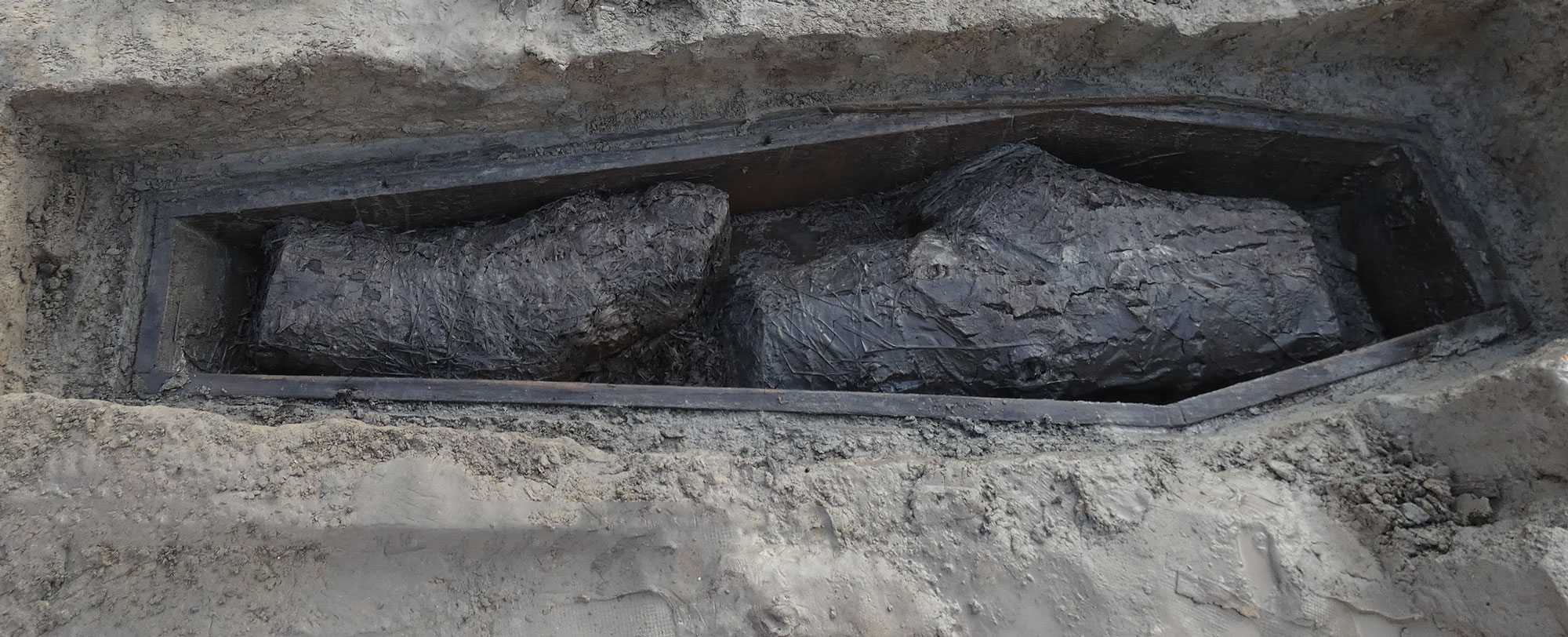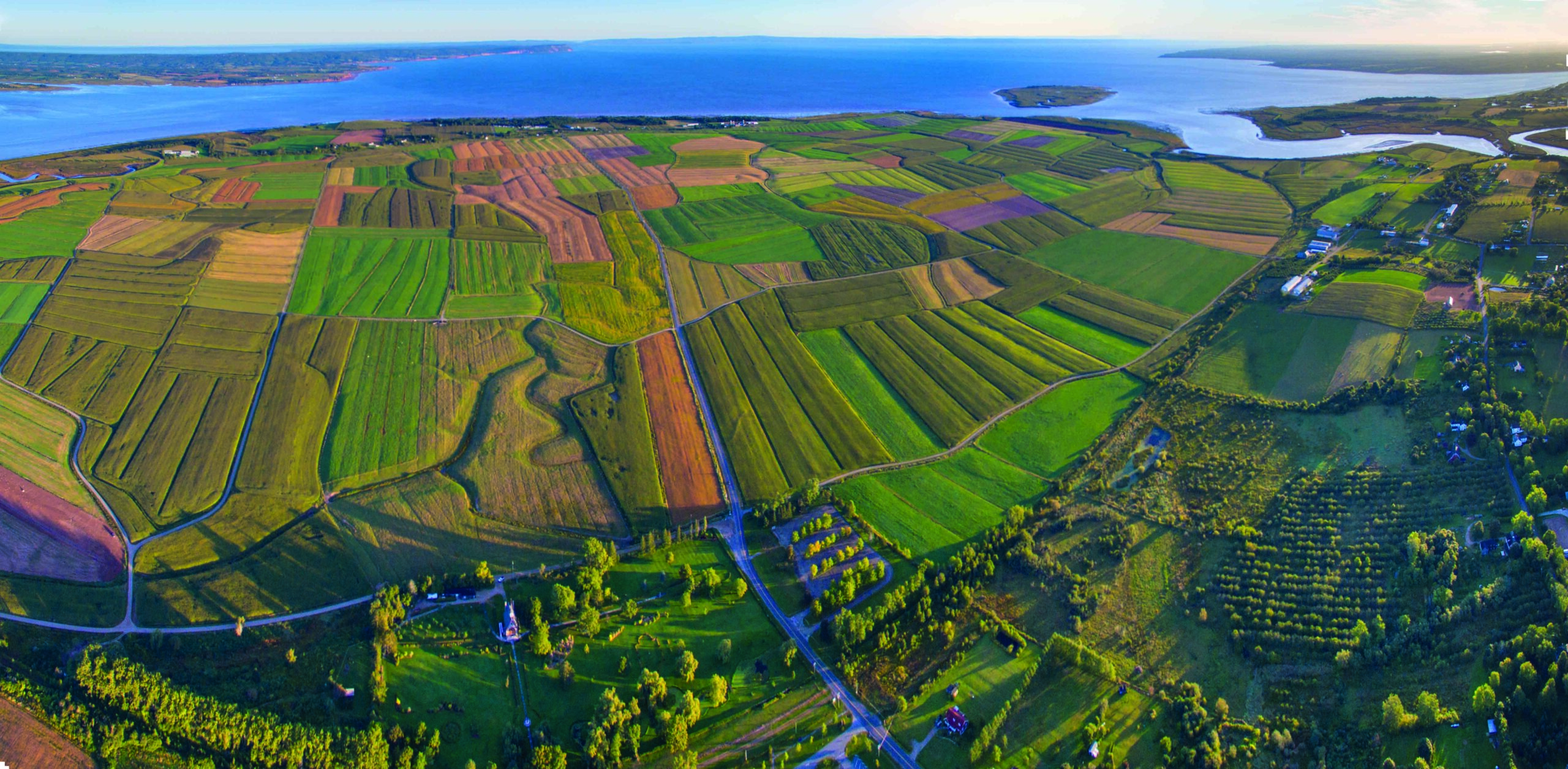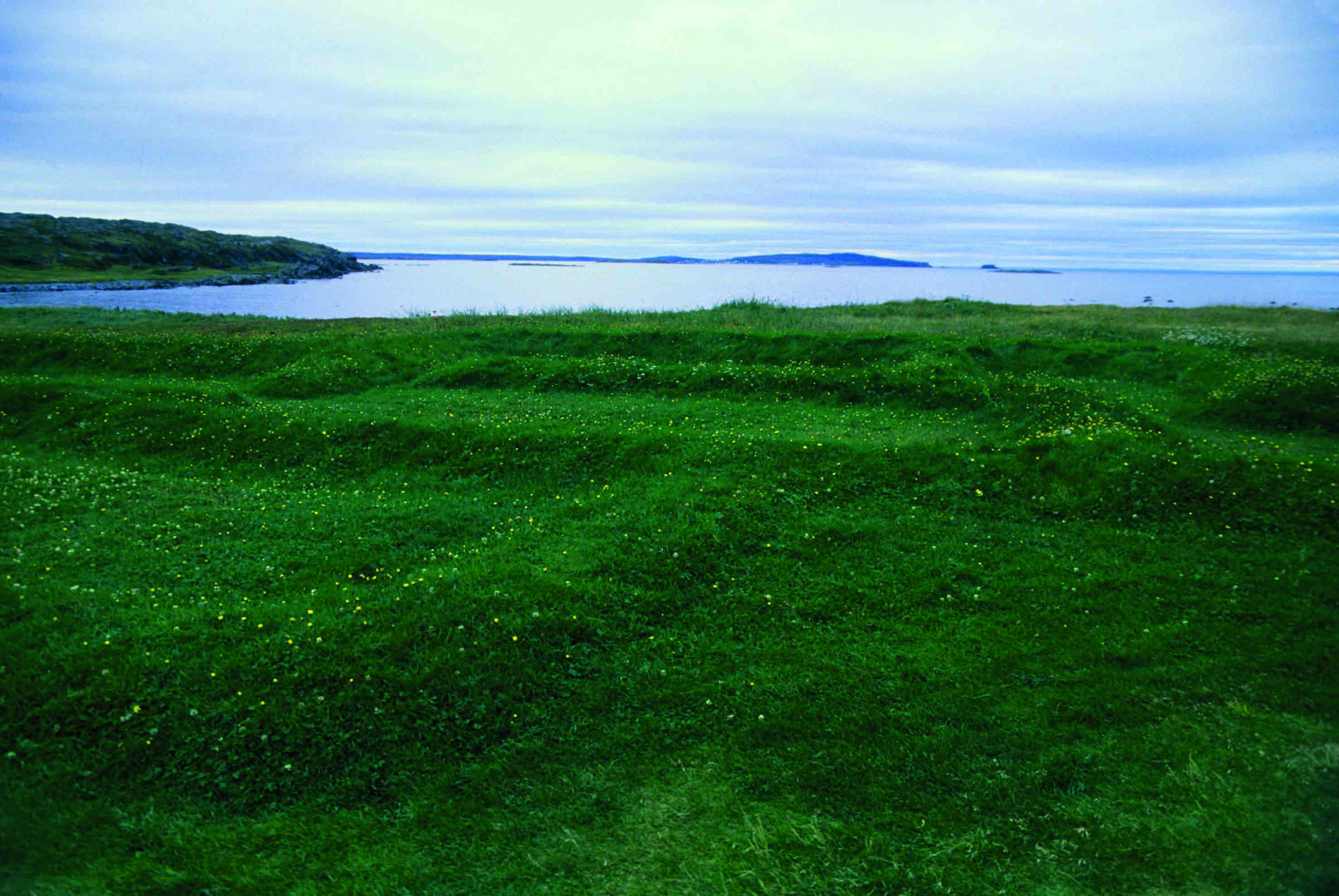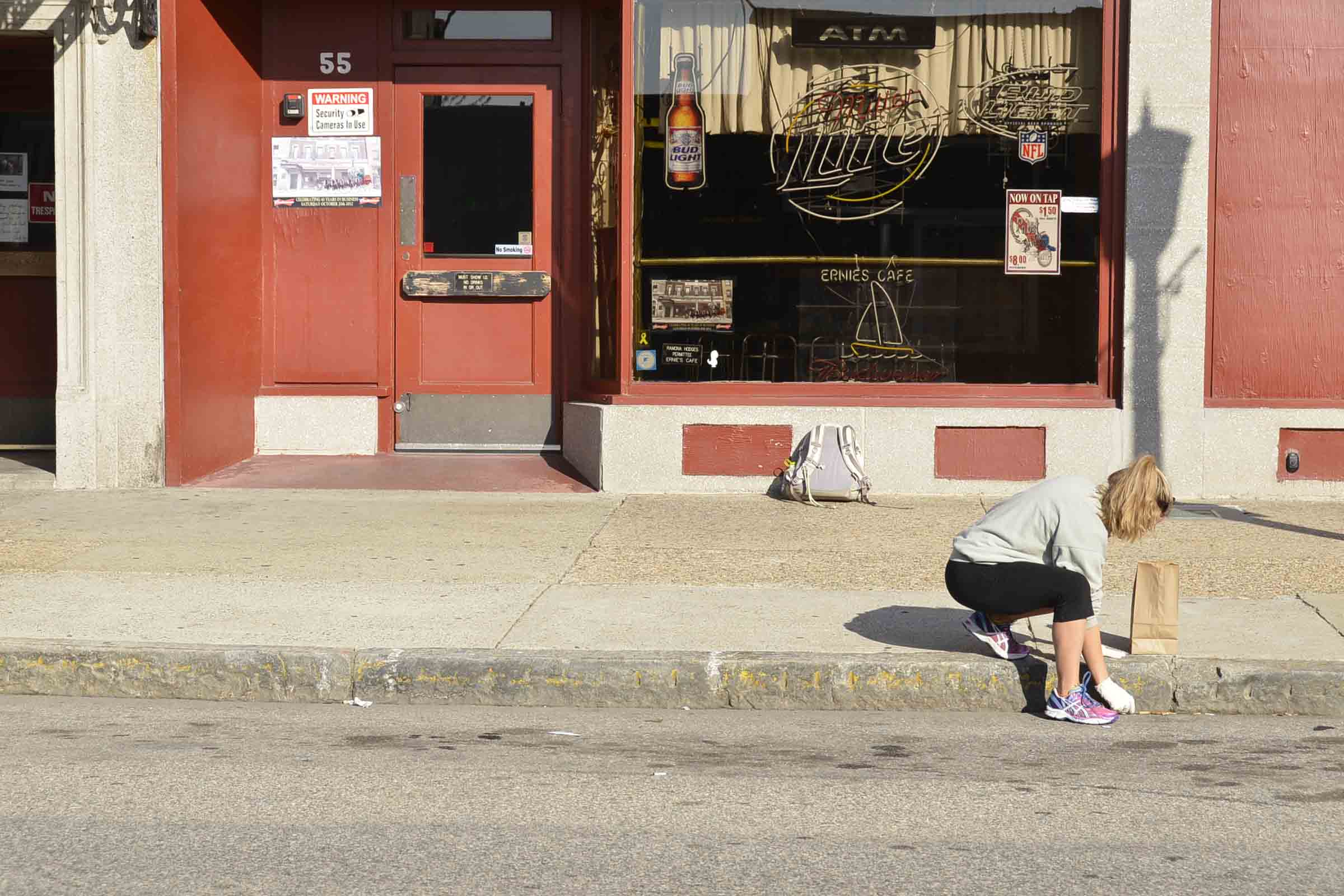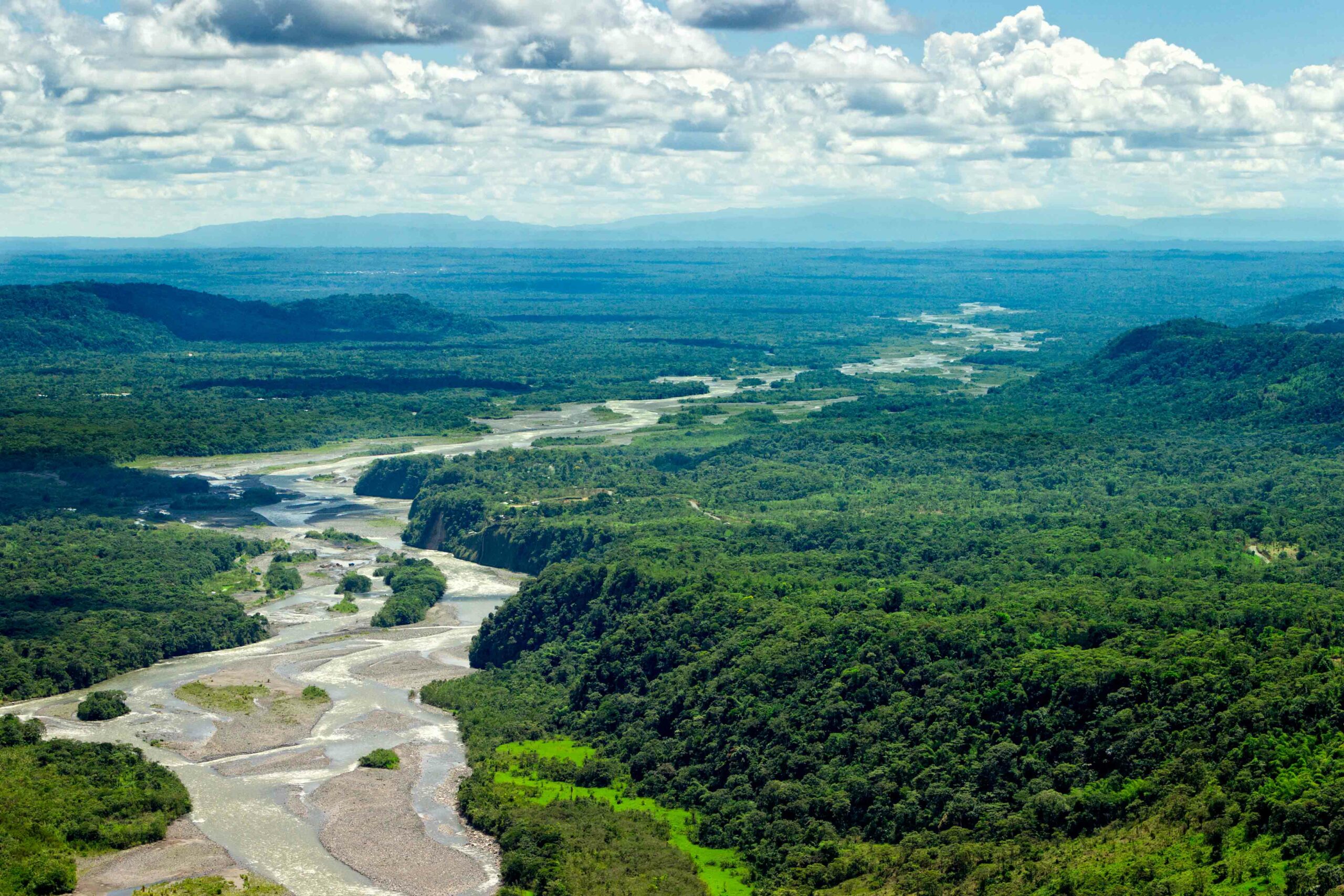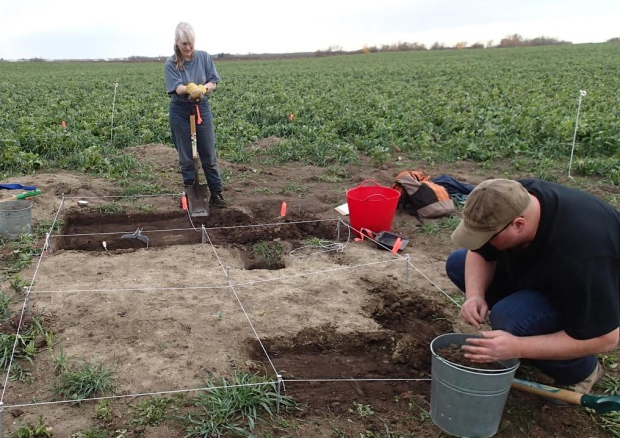
ALBERTA, CANADA—A farmer in western Canada alerted authorities after he discovered a human skull in a field during last summer’s drought. Once scientists determined that the skull dated to the early nineteenth century, the site was excavated by a team from the Archaeological Survey of Alberta. The scientists uncovered the rest of the skeleton, some 3,000 beads, jewelry, European-style brass buttons from a military jacket, and a thimble. Experts from the University of Alberta determined that the bones had belonged to a 13 or 14-year-old girl. “Because she was buried in what appears to be a shallow grave away from any known sites that we believe would have been important at that time, it is possible that she died in transit between two locations. But at this point it is all very much a mystery,” Matthew Wangler, Alberta Culture’s director of historical resources, told CBC News. But the researchers think she may have been the daughter of a chief who was traveling on a trade route between a European fort and an aboriginal settlement when she died. The girl’s remains and the artifacts were reburied in a ceremony near the original site. To read in-depth about archaeology in the High Plains, go to "The Buffalo Chasers."



